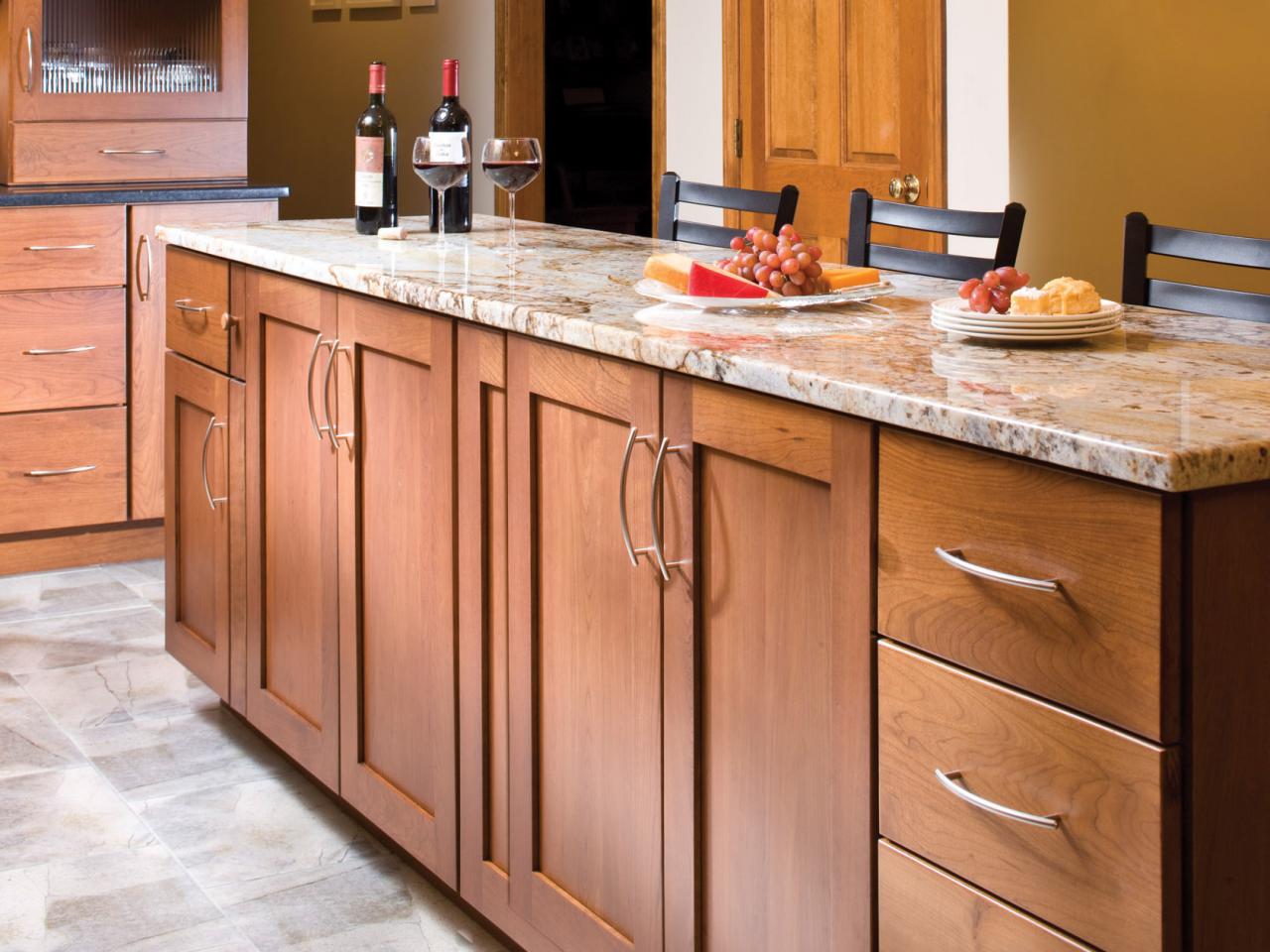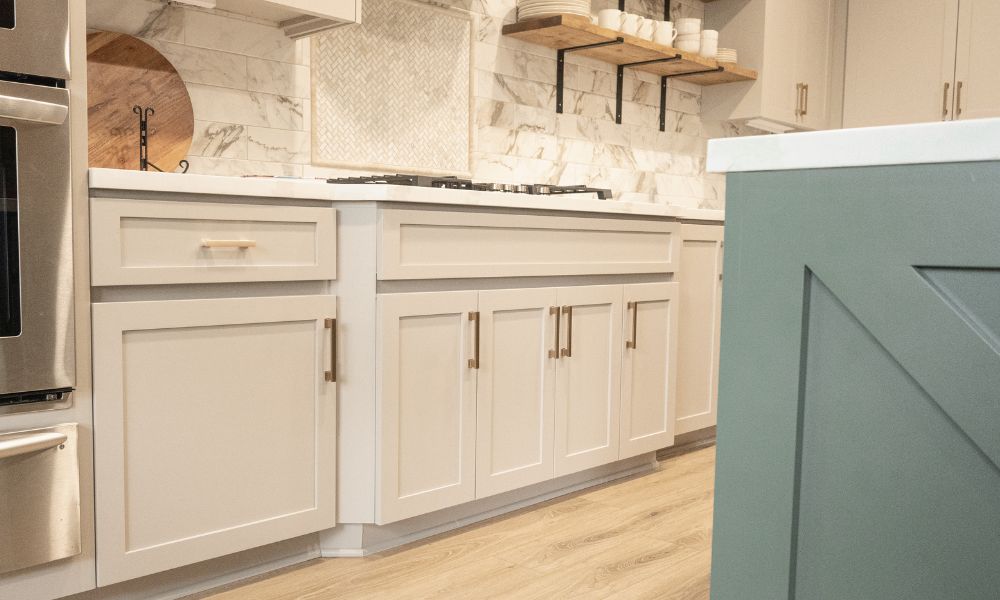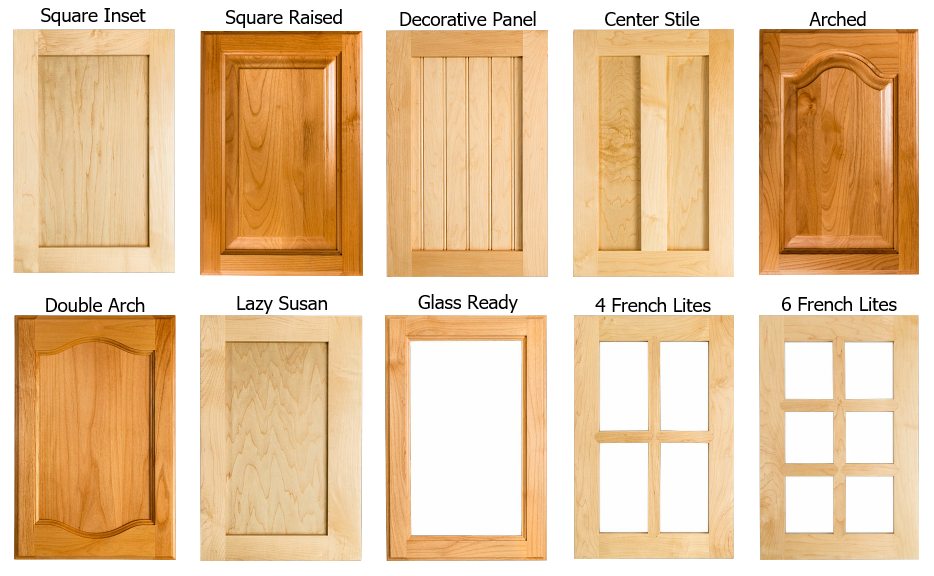Aesthetics and Design

Shaker cabinets and raised panel cabinets are two popular styles that offer distinct visual appeal and design possibilities. The choice between these two options often depends on the desired aesthetic and the overall style of the kitchen.
Visual Appeal
Shaker cabinets, known for their simple and clean lines, are characterized by a flat center panel framed by a recessed frame. This minimalist design creates a sense of order and modernity, making them a popular choice for contemporary and transitional kitchens. Raised panel cabinets, on the other hand, feature a raised center panel that creates a more traditional and ornate look. The raised panel design adds depth and dimension to the cabinet doors, making them suitable for classic, farmhouse, and traditional kitchen styles.
Styles and Finishes
Both shaker and raised panel cabinets can be customized with a wide range of finishes and colors. Shaker cabinets often feature a painted finish, allowing for a clean and polished look. They can also be stained to achieve a natural wood finish. Raised panel cabinets, due to their intricate design, are often stained to showcase the natural beauty of the wood. However, they can also be painted to create a more contemporary look.
Integration into Kitchen Designs
Shaker cabinets are versatile and can be integrated into various kitchen designs. Their clean lines complement modern appliances and sleek countertops. They can be paired with open shelving, stainless steel accents, and bold backsplashes to create a contemporary and minimalist aesthetic. Raised panel cabinets, with their traditional charm, are well-suited for kitchens with a classic or farmhouse style. They can be paired with rustic elements like exposed beams, reclaimed wood countertops, and antique hardware.
Comparison of Styles
| Style | Description | Image |
|—|—|—|
| Shaker | Flat center panel with a recessed frame | [Image description: A shaker cabinet door with a flat center panel and a recessed frame. The door is painted white and has a simple, minimalist design.] |
| Raised Panel | Raised center panel with a decorative frame | [Image description: A raised panel cabinet door with a raised center panel and a decorative frame. The door is stained a rich brown and has a traditional, ornate design.] |
Functionality and Features

Shaker cabinets and raised panel cabinets are two popular styles of kitchen cabinetry, each with unique features and functionalities that cater to different aesthetic preferences and practical needs.
Storage and Accessibility
The functionality of shaker cabinets and raised panel cabinets in terms of storage and accessibility is largely determined by their design and the hardware used.
Shaker cabinets, with their simple, flat-panel doors, offer a clean and streamlined look, maximizing storage space. Their minimalist design allows for efficient use of space, making them ideal for kitchens with limited storage. The flat panels also make it easier to access items stored inside, as there are no raised areas to obstruct the view.
Raised panel cabinets, with their intricate designs and raised center panels, can add a touch of elegance and sophistication to a kitchen. However, their design can sometimes limit storage space, especially in smaller kitchens. The raised panels can also make it slightly more challenging to access items stored in the back of the cabinet, as the raised panel can obstruct the view.
Hardware
The hardware used on shaker cabinets and raised panel cabinets can significantly impact their functionality.
Shaker cabinets are often paired with simple, minimalist hardware, such as knobs or pulls with clean lines and a contemporary aesthetic. These hardware choices complement the minimalist design of the cabinets, creating a cohesive look.
Raised panel cabinets can accommodate a wider range of hardware styles, from traditional to contemporary. For example, decorative knobs or pulls with intricate designs can enhance the elegant and sophisticated look of the cabinets.
Ease of Cleaning and Maintenance
Shaker cabinets, with their flat panels, are generally easier to clean and maintain than raised panel cabinets. The absence of raised panels and intricate details minimizes the risk of dust and grime accumulating in hard-to-reach areas.
Raised panel cabinets, with their intricate designs and raised panels, can be more challenging to clean and maintain. Dust and grime can accumulate in the grooves and crevices of the raised panels, requiring more frequent cleaning.
Kitchen Layout
Here’s a hypothetical kitchen layout showcasing how shaker cabinets and raised panel cabinets can be used to maximize storage and functionality:
* Shaker Cabinets: Shaker cabinets can be used for the majority of the kitchen cabinetry, including base cabinets, wall cabinets, and pantry cabinets. Their simple design and efficient storage capabilities make them ideal for storing everyday items and maximizing storage space.
* Raised Panel Cabinets: Raised panel cabinets can be used for accent pieces, such as an island cabinet or a display cabinet, to add a touch of elegance and sophistication to the kitchen. Their intricate designs can create a focal point in the kitchen, enhancing the overall aesthetic appeal.
This layout demonstrates how shaker cabinets and raised panel cabinets can be used in conjunction to create a functional and visually appealing kitchen.
Cost and Material: Shaker Cabinets Vs Raised Panel

The cost of shaker cabinets and raised panel cabinets can vary significantly depending on the materials used, the complexity of the design, and the size of the cabinets. In general, shaker cabinets are typically less expensive than raised panel cabinets, but there are exceptions to this rule.
The cost of cabinets is influenced by several factors, including the type of wood, the quality of the construction, the hardware used, and the finish applied. It’s important to consider these factors when comparing the cost of shaker cabinets and raised panel cabinets.
Material Comparison
The type of wood used for shaker cabinets and raised panel cabinets can have a significant impact on the cost. Here are some common materials and their relative cost:
- Solid Wood: Solid wood cabinets are the most expensive option, but they also offer the highest level of durability and longevity. Popular choices for solid wood cabinets include maple, cherry, oak, and walnut. The cost of solid wood cabinets can vary depending on the type of wood, the thickness of the wood, and the quality of the construction.
- Plywood: Plywood cabinets are a more affordable option than solid wood cabinets. They are made from layers of wood veneer glued together, which makes them strong and stable. Plywood cabinets are often painted, but they can also be stained to achieve a more natural look.
- Medium-Density Fiberboard (MDF): MDF cabinets are the least expensive option, but they are also the least durable. MDF is a manufactured wood product made from wood fibers that are bonded together with resin. MDF cabinets are often painted, but they can be more susceptible to scratches and dents than solid wood or plywood cabinets.
Durability and Longevity, Shaker cabinets vs raised panel
Shaker cabinets and raised panel cabinets can both be very durable and long-lasting, but there are some differences in their construction that can affect their longevity.
- Shaker Cabinets: Shaker cabinets are known for their simple design, which makes them less prone to damage. The flat panels and simple door styles are easy to clean and maintain.
- Raised Panel Cabinets: Raised panel cabinets have more intricate details, which can make them more susceptible to damage. The raised panels can be more difficult to clean, and they can also be more prone to scratches and dents. However, with proper care and maintenance, raised panel cabinets can last for many years.
Cost Comparison Table
Here is a table that compares the average cost of shaker cabinets and raised panel cabinets based on material and size:
| Cabinet Style | Material | Size (Width x Height x Depth) | Average Cost |
|---|---|---|---|
| Shaker | Solid Wood (Maple) | 36″ x 30″ x 12″ | $500 – $800 |
| Raised Panel | Solid Wood (Cherry) | 36″ x 30″ x 12″ | $600 – $1,000 |
| Shaker | Plywood | 36″ x 30″ x 12″ | $300 – $500 |
| Raised Panel | Plywood | 36″ x 30″ x 12″ | $400 – $600 |
| Shaker | MDF | 36″ x 30″ x 12″ | $200 – $300 |
| Raised Panel | MDF | 36″ x 30″ x 12″ | $250 – $400 |
Shaker cabinets vs raised panel – Shaker cabinets and raised panel doors offer distinct styles, with shaker’s clean lines and raised panel’s intricate detailing appealing to different tastes. If you’re seeking a DIY solution for built-in cabinets, DIY built-in cabinets using IKEA components can be a fantastic option, allowing you to customize your kitchen or bathroom with shaker or raised panel doors, depending on your preferred aesthetic.
Ultimately, the choice between shaker and raised panel comes down to personal preference and the overall design of your space.
Shaker cabinets and raised panel doors each bring their own charm to a space, but sometimes you crave something a little more unique. If you’re looking for a rustic touch, consider building a DIY rustic file cabinet for your home office.
The distressed wood and simple design will create a welcoming and functional piece, while still allowing you to choose between shaker or raised panel doors for the perfect finishing touch.
